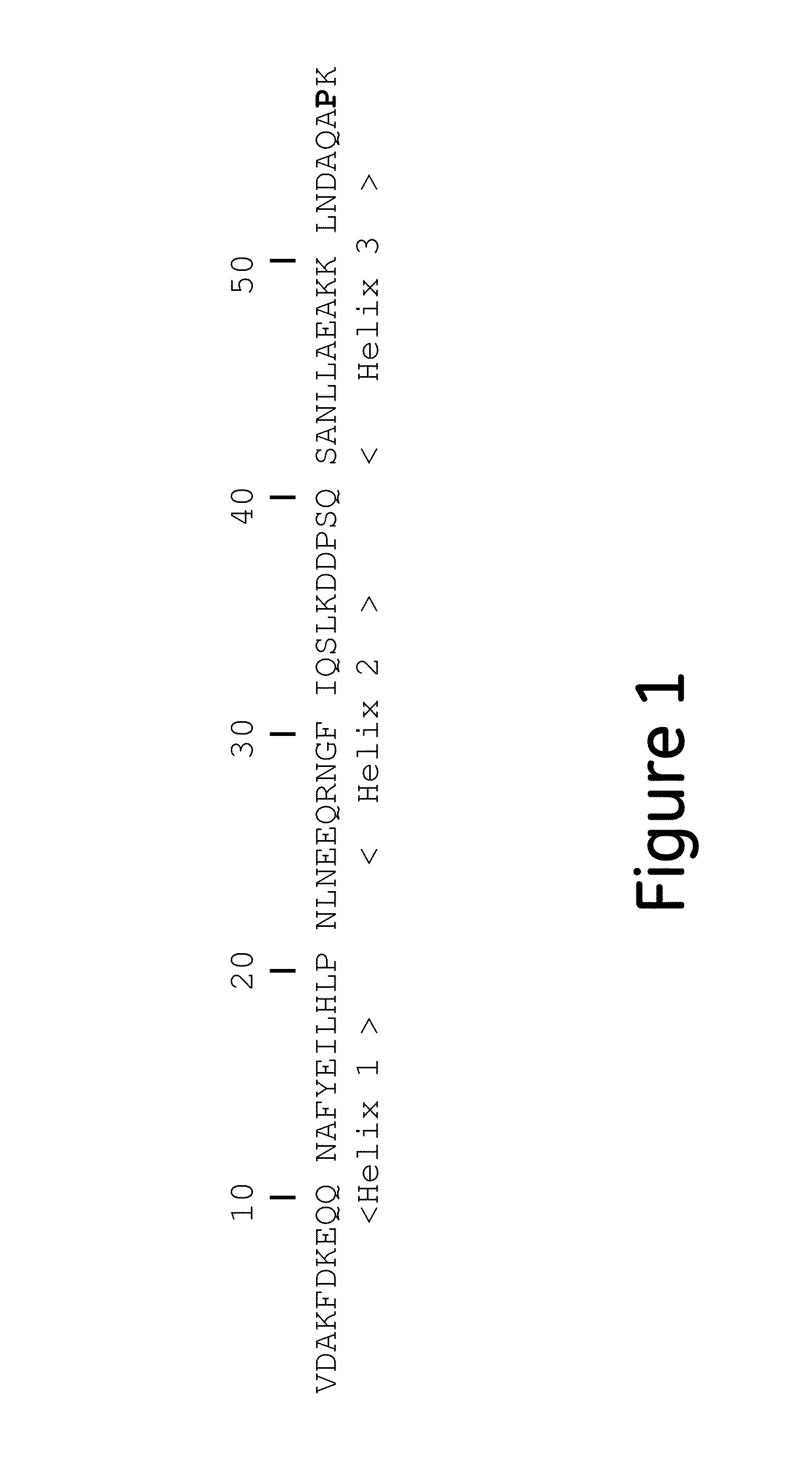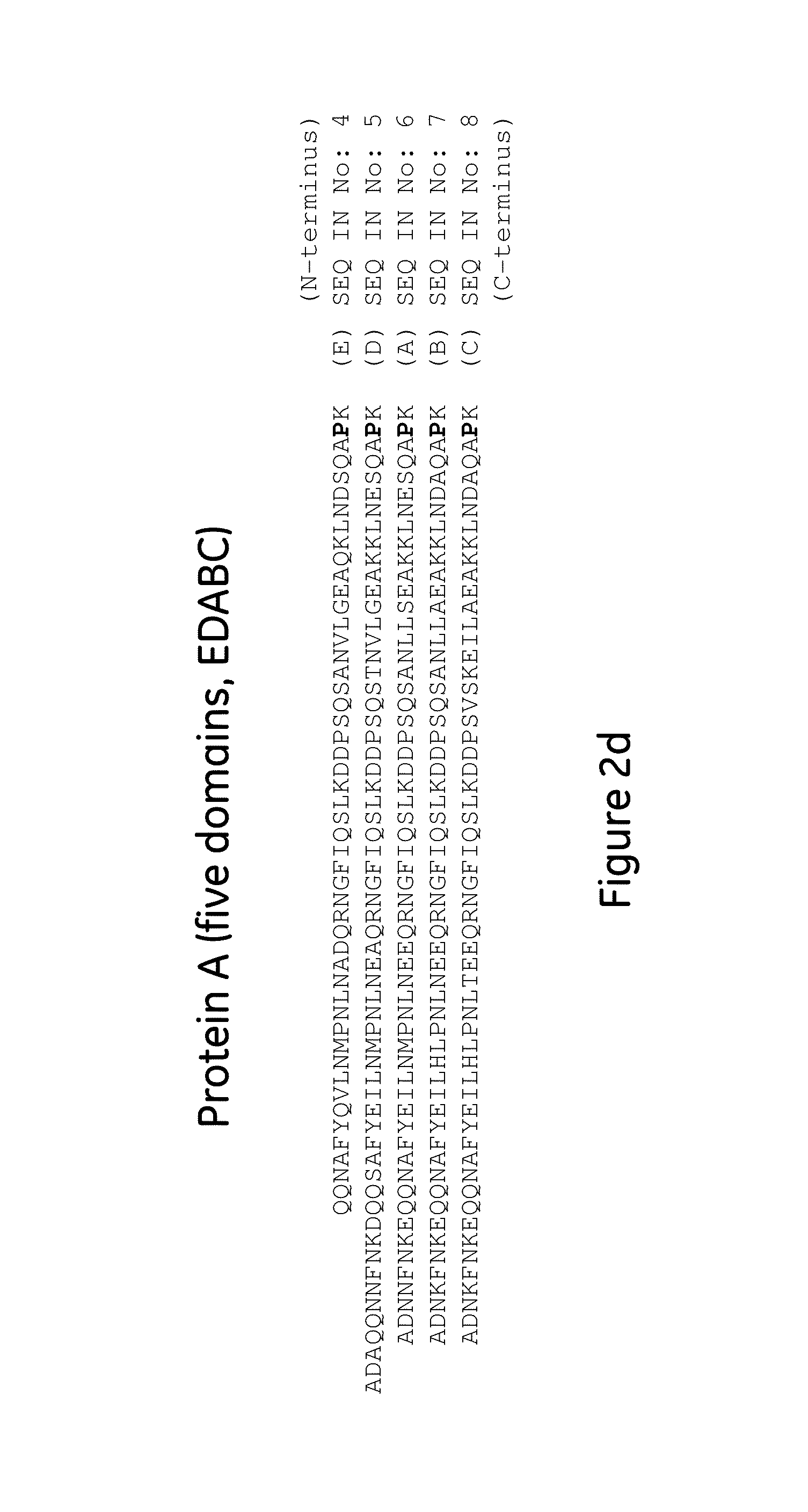Affinity chromatography matrix
a technology of affinity chromatography and matrix, which is applied in the field ofaffinity chromatography, can solve problems such as capacity reduction, and achieve the effect of high binding capacity
- Summary
- Abstract
- Description
- Claims
- Application Information
AI Technical Summary
Benefits of technology
Problems solved by technology
Method used
Image
Examples
example 1
Prototypes
[0080]Mutant Z(P57I)2: ligand dimers containing two copies of protein Z, each containing the P57I substitution (Z(P57I)2) (SEQ ID No. 3), with ligand density of 5.8 mg / ml.
[0081]Mutant Z(P57I)4: ligand tetramers containing four copies of protein Z, each containing the P57I substitution (Z(P57I)4) (SEQ ID No. 10), with ligand density of 9.7 mg / ml.
[0082]Mutant C(P57I)2: ligand dimers containing two copies of the Protein A C domain, each containing the P57I substitution (C(P57I)2) (SEQ ID No. 9), with ligand density of 7.2 mg / ml.
[0083]Regular Z2: ligand dimers containing two copies of protein Z (Z2 reg) (SEQ ID No. 3 but without the P57I substitutions), with ligand density of 6.1 mg / ml.
[0084]2 ml of each resin was packed in Tricorn 5 100 columns
[0085]Gammanorm 165 mg / ml (Octapharma), diluted to 1 mg / ml in Equilibration buffer.
Equilibration Buffer
[0086]APB Phosphate buffer 20 mM+0.15M NaCl, pH 7,4 (Elsichrom AB)
Adsorption Buffer
[0087]APB Phosphate buffer 20 mM+0.15M NaCl...
PUM
| Property | Measurement | Unit |
|---|---|---|
| angle | aaaaa | aaaaa |
| density | aaaaa | aaaaa |
| pore size | aaaaa | aaaaa |
Abstract
Description
Claims
Application Information
 Login to View More
Login to View More - R&D
- Intellectual Property
- Life Sciences
- Materials
- Tech Scout
- Unparalleled Data Quality
- Higher Quality Content
- 60% Fewer Hallucinations
Browse by: Latest US Patents, China's latest patents, Technical Efficacy Thesaurus, Application Domain, Technology Topic, Popular Technical Reports.
© 2025 PatSnap. All rights reserved.Legal|Privacy policy|Modern Slavery Act Transparency Statement|Sitemap|About US| Contact US: help@patsnap.com



